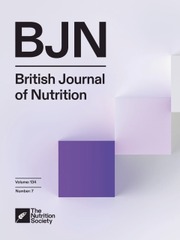No CrossRef data available.
Article contents
Sex-specific association between Chinese visceral adiposity index and hyperuricemia among adults: a population-based cross-sectional study in Chongqing, China
Published online by Cambridge University Press: 04 April 2025
Abstract
Research on the association between the Chinese visceral adiposity index (CVAI) and hyperuricemia (HUA) is scarce, and whether the association differs by sex is unclear. This research aimed to explore sex-specific associations between CVAI and HUA and to compare CVAI’s predictive performance with other adiposity indices using data from 22,171 adults (30–79 years) in the China Multi-Ethnic Cohort (CMEC) study (Chongqing region). The prevalence of HUA was 20.9% in men and 9.7% in women. Multivariable logistic regression analyses were utilized to assess the adjusted odds ratios (ORs) and 95% confidence intervals (CIs). After multivariable adjustment, CVAI was associated with HUA in men (OR Q4 vs. Q1 = 3.31, 95% CI 2.73, 4.03) and women (OR Q4 vs. Q1 = 7.20, 95% CI 5.12, 10.12). Moreover, Significant interactions were observed between BMI and CVAI on HUA in both sexes (all Pinteraction <0.001), with the strongest associations in those with BMI <24.0 kg/m2. The ORs (95% CI) across different BMI groups (<24.0, 24.0–27.9, ≥28.0 kg/m²) were 1.87 (1.63, 2.13), 1.65 (1.48, 1.85), and 1.30 (1.14, 1.49) for men, and 2.76 (2.18, 3.51), 2.46 (1.98, 3.07), and 1.87 (1.47, 2.39) for women, respectively. Additionally, CVAI showed satisfactory predictive performance for HUA in women, with the largest area under the receiver operating characteristic curve (AUROC) of 0.735, but not in men (0.660). These findings suggest a close association between CVAI and HUA, particularly pronounced in those with BMI <24.0 kg/m², and a stronger association in women than in men.
- Type
- Research Article
- Information
- Copyright
- © The Author(s), 2025. Published by Cambridge University Press on behalf of The Nutrition Society


